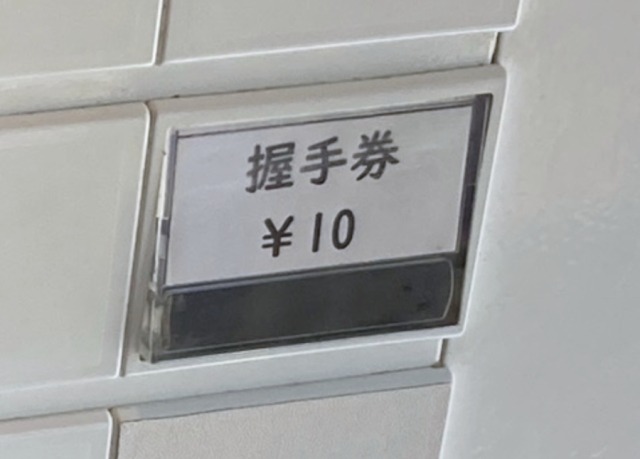
The ramen is so good, they’ll shake on it.
Although often given away for free in certain cultures, a handshake can sometimes be regarded as a commodity in Japan. However, not just anyone can charge a premium to let you put it there, and this business is often limited to idols or other celebrities.
This brings us to Jokigen Itadaki, a ramen shop that has been earning a reputation for offering “handshake tickets” alongside their noodles. We sent Mr. Sato there to learn more and see how much a handshake with the owner is going for in this economy.
Jokigen Itadaki is about a 10-minute walk from Shin-Sayama Station in Sayama, Saitama Prefecture. It’s on a corner of the busy Route 16 highway and probably most easily spotted by its signs touting “thick tori paitan ramen,” which is a ramen that uses a chicken broth.
Another sign near the door gives a more detailed description of the ramen, and underneath it were instructions on where to line up to wait for a table if all the restaurant’s seats are taken, which suggested to Mr. Sato that this place can get quite busy at times.
After entering the restaurant, Mr. Sato headed to the ticket machine. At the top were two types of tori paitan ramen and a cleverly named “Ma-tori-x” ramen, again with tori being the Japanese word for “bird” or, in this case, “chicken.”
It all seemed like pretty standard stuff for a ramen shop, until our reporter suddenly found the “handshake ticket” button.
▼ “Handshake Ticket – 10 yen [US$0.07]”
Mr. Sato bought one ticket for a soy sauce-broth thick tori paitan ramen (980 yen [US$7]) and one for a handshake, then took them to the counter. Upon seeing the tickets the owner asked how Mr. Sato heard about the handshake ticket. “Did you see it somewhere? On Instagram or something?”
Mr. Sato looked up at the wall, where photos of people who had bought handshakes in the past hung, and replied: “I saw it on Instagram and your website. Shake my hand, please!”
The owner, Mr. Kishioka, and Mr. Sato seemed like kindred spirits and even learned that they were both born in 1973. Mr. Kishioka also showed our reporter around some of the other many gags embedded in Jokigen Itadaki.
First, there was the change machine which looks somewhat normal at a quick first glance.
But upon closer inspection the slot where your money comes out looks like the head of a Zaku I unit from Mobile Suit Gundam and is even labeled “Kyu Zaku.”
At the bottom is a big stack of cash with “buried treasure” written on the window. It may look conspicuous in the photo like this, but Mr. Kishioka says that most people don’t notice it. He also changes what’s written on the window from time to time to keep people on their toes.
And in one corner there’s a button mounted on the wall that resembles the kind of button you’d find on a bus to signal that you want to get off. Above it is a sign that says: “Push the button and a bear will appear.”
Mr. Sato wondered where such a bear would come from and glanced up to see a suspicious looking box near the ceiling.
After pushing the button a light came from the bottom of the box and music started playing as a bear gently lowered down on a platform. After his appearance was made, he gently floated back up, accompanied by music.
All of these gimmicks were made by Mr. Kishioka himself and that bear took him about a year to design and install. The owner credits his tenacious personality to putting these things together, saying: “You can do anything if you don’t give up.”
More jokes could be found outside as well, such as this sign warning would-be criminals that a “Security Gamera has been installed!”
▼ “Suspicious people will be taken away by Gamera.”
Near that was the “Sumo Oh Area” in which “oh” is the Japanese word for “king.” That makes this the “Sumo King Area.”
▼ Say it fast and out loud if you still don’t get it.
By this point, it’s probably well established that Mr. Kishioka puts a lot of thought into everything and the ramen here is no different. As the name mentioned, this was a very thick chicken broth, using the famous Joshu-jidori chicken of Gunma Prefecture.
The flavor was very deep and strong, but at the same time not overbearing and gave a fascinating umami depth with a refreshing aftertaste.
There were also some recommended eating guidelines on the table, which explained that it’s more delicious if the bread is eaten first. Mr. Sato did so, and couldn’t agree more. The thickness of the soup went perfectly well with the bread, and he seriously considered adding a second order of bread for 110 yen ($0.80) more.
A lot of thought was also put into the noodles, which are made from Yumechikara flour. Although this kind of flour is usually used in bread-making, it fit perfectly well in this dish to provide a firm texture that held up in the thick broth.
As Mr. Sato ate, Mr. Kishioka explained that the restaurant has been in business for 21 years and switched from tonkotsu to tori paitan ramen in 2016. His ramen teacher was an inspiration to him and said that you can’t stay in business with great ramen alone. So, he devoted himself to making a restaurant where he, his staff, and the customers can all have fun.
Mr. Sato felt Mr. Kishioka really accomplished that with Jokigen Itadaki and after finishing up his meal he settled up his handshake with the owner.
Just as he left, Mr. Sato realized that he forgot to get a second order of bread because he was too absorbed in the ramen and conversation. He also thought a side order or rice would go remarkably well with that kind of ramen.
He’ll definitely try it next time though, as this is a place he’s sure to come back to.
Restaurant information
Jokigen Itadaki / 上気元いただき
Address: Saitama-ken, Sayama-shi, Shimookutomi 610
埼玉県狭山市下奥富610
Open 11:00 a.m.-3:00 p.m.
Closed Thursdays
Website
Photos ©SoraNews24
● Want to hear about SoraNews24’s latest articles as soon as they’re published? Follow us on Facebook and Twitter!

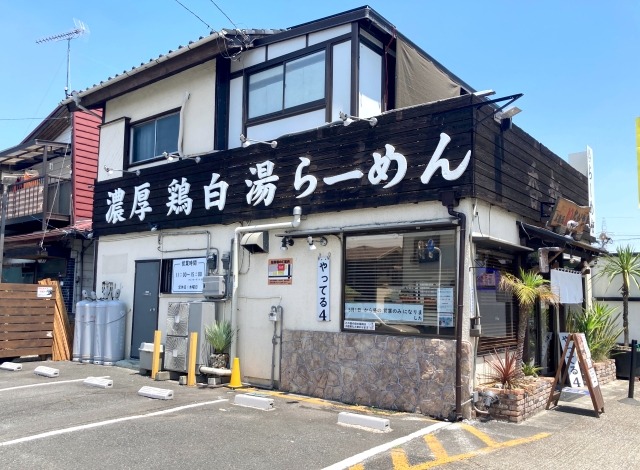
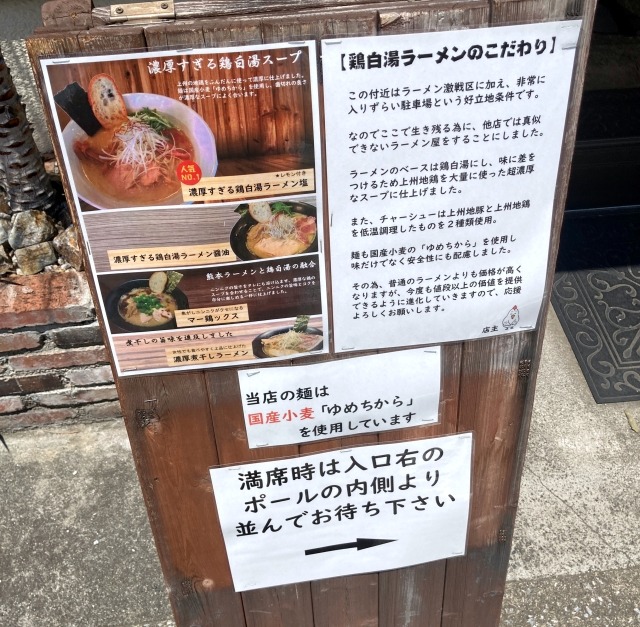
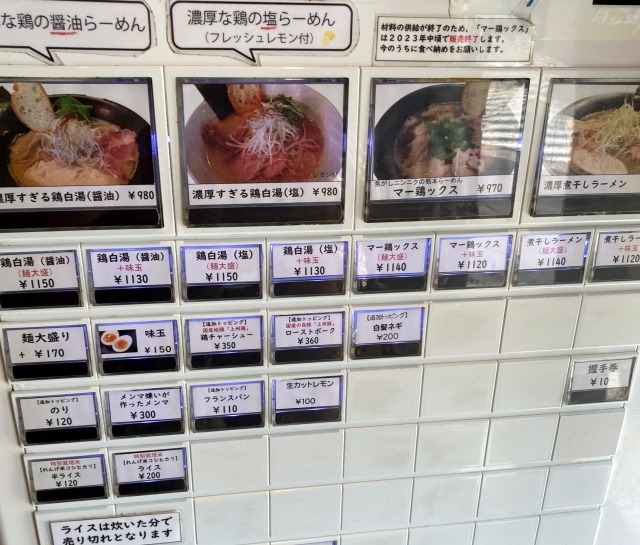
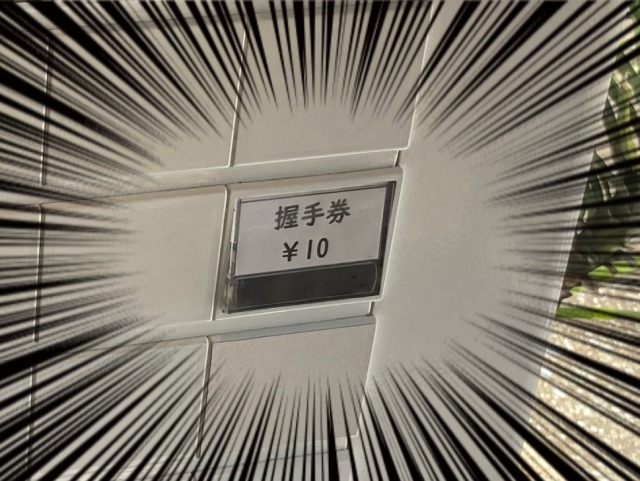
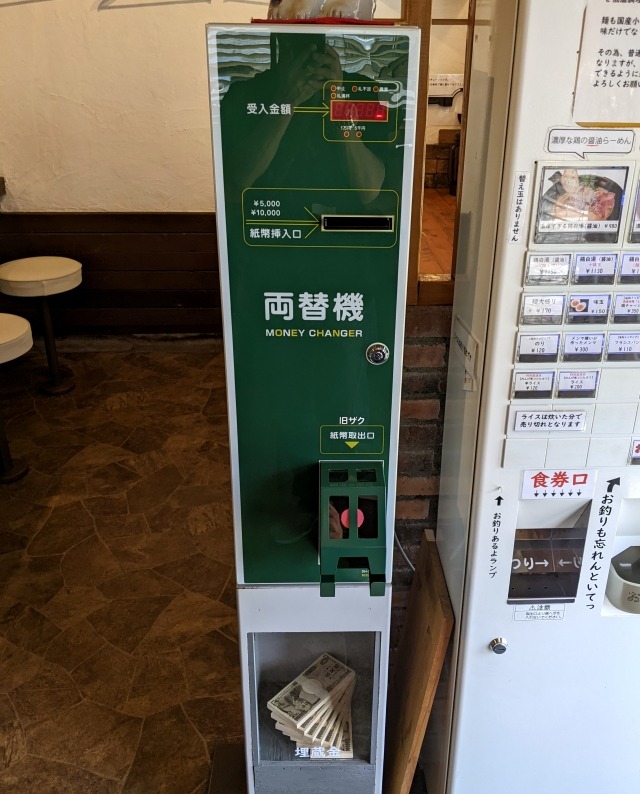
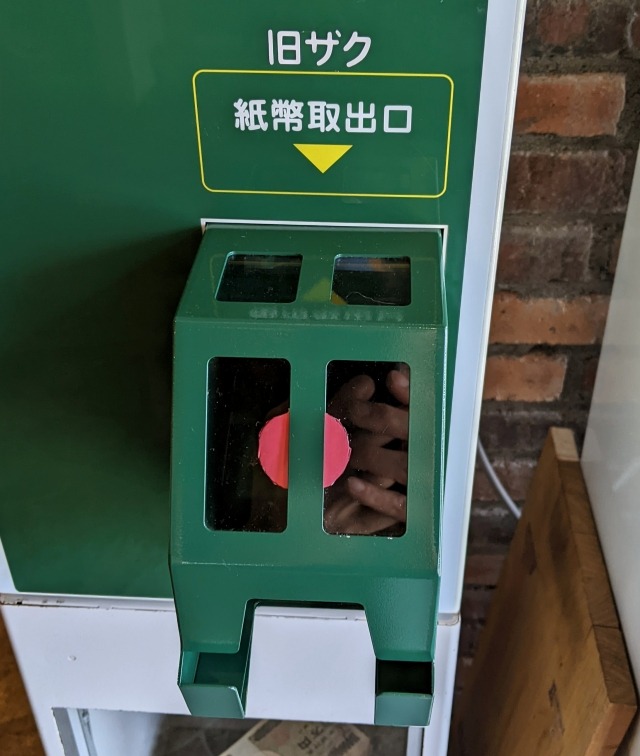
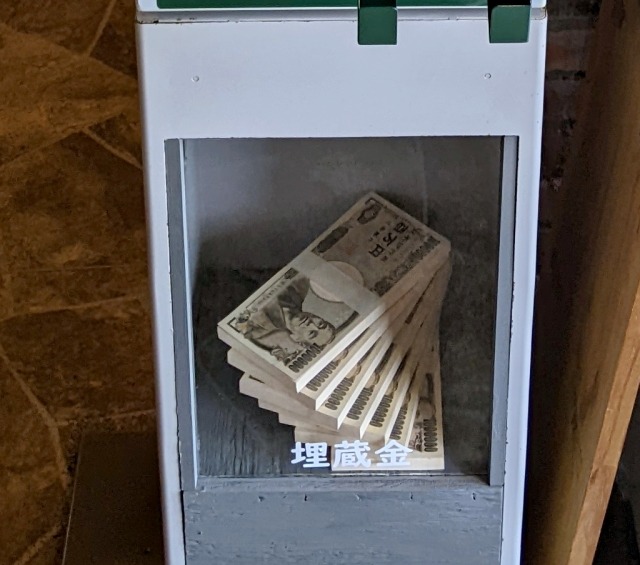
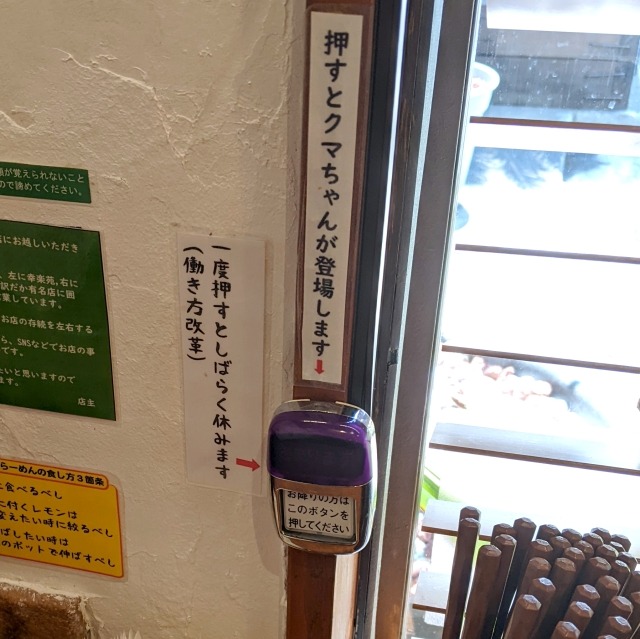
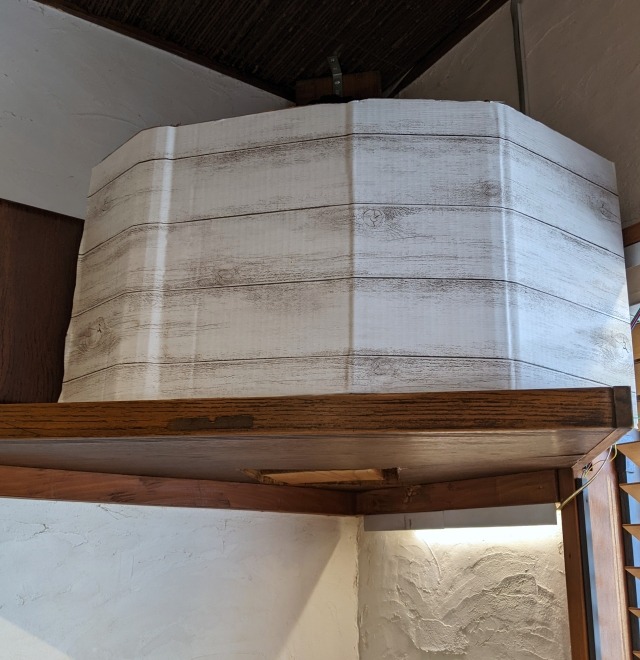
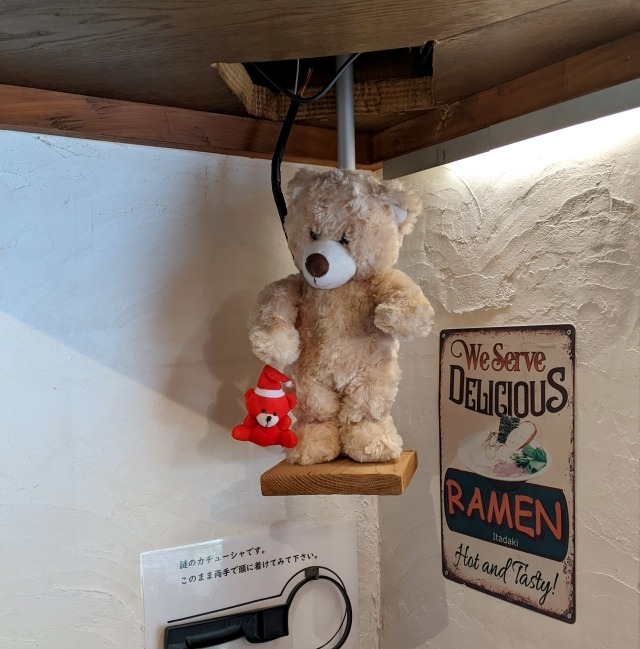
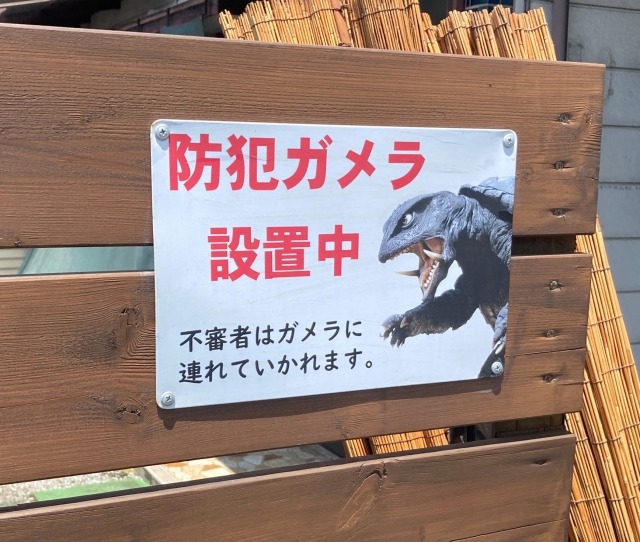
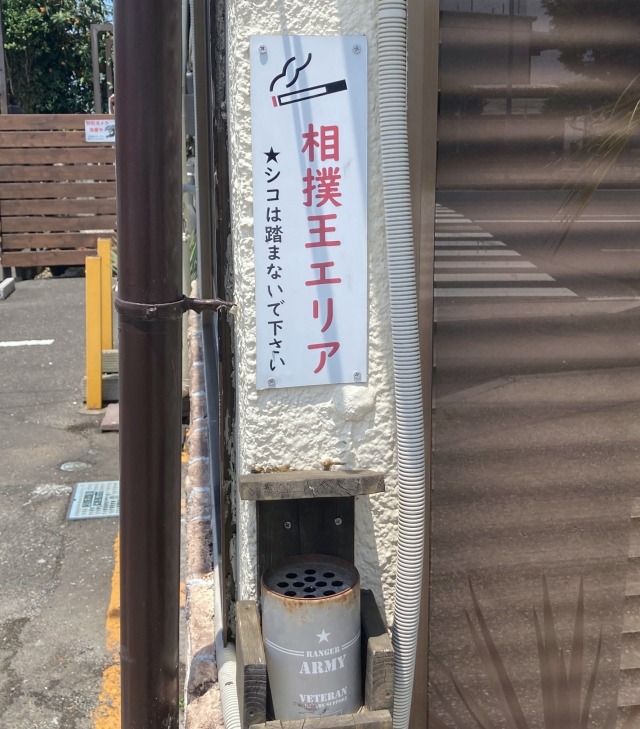
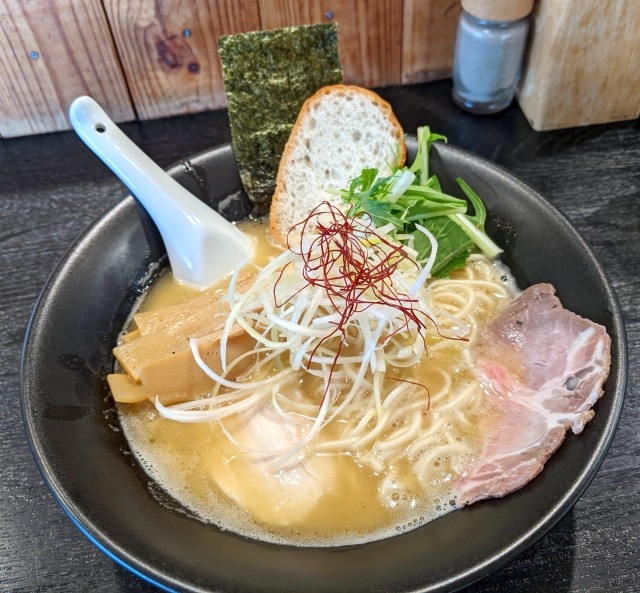
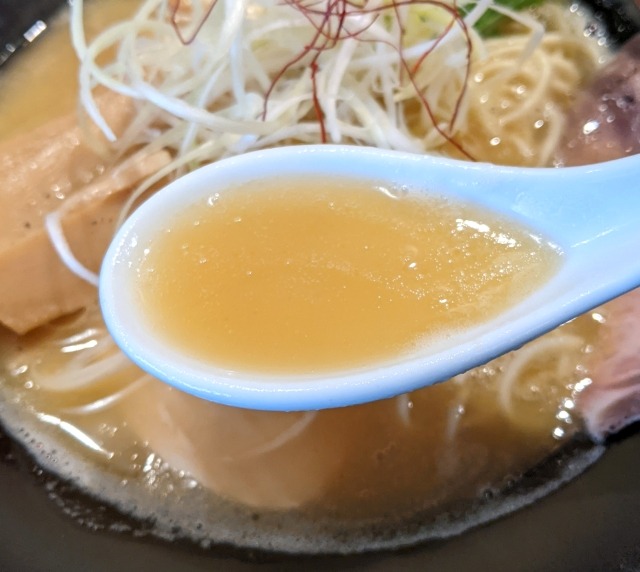
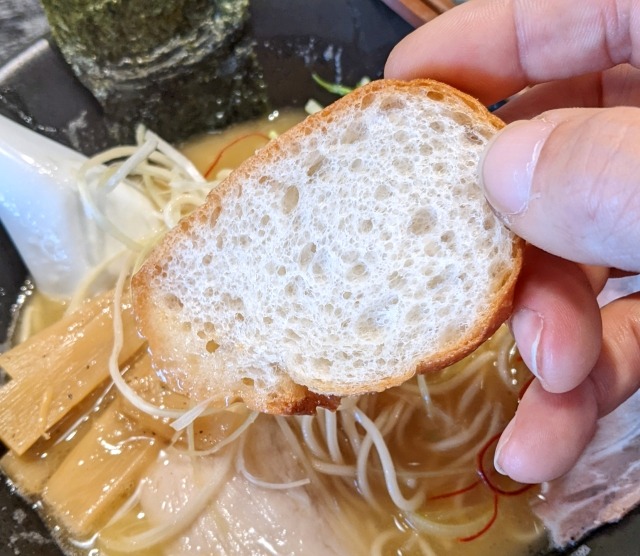
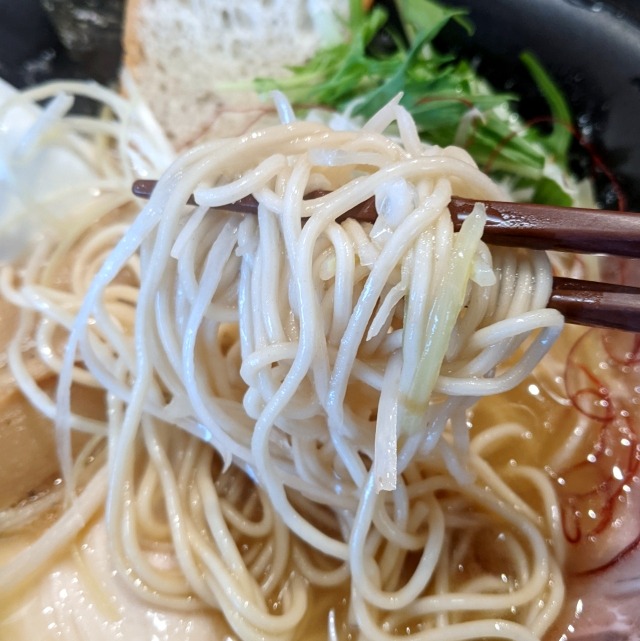
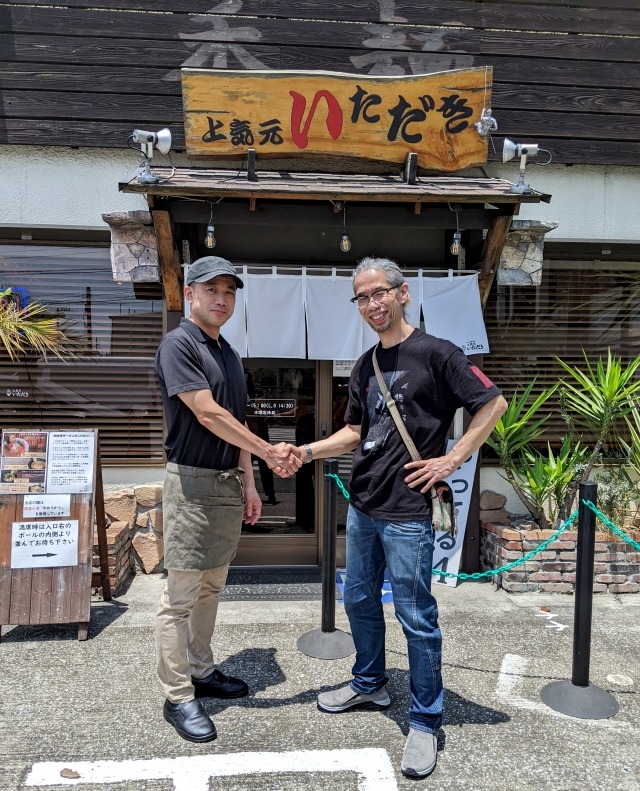
 Ramen restaurant in Japan sells one-of-a-kind extra: handshakes with the owner/chef!
Ramen restaurant in Japan sells one-of-a-kind extra: handshakes with the owner/chef! Takeout ramen broth: A new Tokyo winter noodle trend that’s worth the hype? 【Taste Test】
Takeout ramen broth: A new Tokyo winter noodle trend that’s worth the hype? 【Taste Test】 Frozen pudding pops among the many surprises at Ramen Deniro in Tokyo
Frozen pudding pops among the many surprises at Ramen Deniro in Tokyo Tokyo police stopped us for random questioning, so we asked them to recommend a good restaurant
Tokyo police stopped us for random questioning, so we asked them to recommend a good restaurant “Prisoner of Short Ribs”: Yoshinoya’s first sister restaurant in 10 years (maybe 8?)【Taste test】
“Prisoner of Short Ribs”: Yoshinoya’s first sister restaurant in 10 years (maybe 8?)【Taste test】 Foreigner’s request for help in Tokyo makes us sad for the state of society
Foreigner’s request for help in Tokyo makes us sad for the state of society Japanese city loses residents’ personal data, which was on paper being transported on a windy day
Japanese city loses residents’ personal data, which was on paper being transported on a windy day Seaside scenery, history, and so many desserts on Yokohama’s Akai Kutsu【Japan Loop Buses】
Seaside scenery, history, and so many desserts on Yokohama’s Akai Kutsu【Japan Loop Buses】 Red light district sushi restaurant in Tokyo shows us just how wrong we were about it
Red light district sushi restaurant in Tokyo shows us just how wrong we were about it Smash Bros. director Sakurai stabs Kirby in the face, has delicious justification for it
Smash Bros. director Sakurai stabs Kirby in the face, has delicious justification for it Akihabara pop-up shop sells goods made by Japanese prison inmates
Akihabara pop-up shop sells goods made by Japanese prison inmates Ghibli Park now selling “Grilled Frogs” from food cart in Valley of Witches
Ghibli Park now selling “Grilled Frogs” from food cart in Valley of Witches Mt. Koya planning to instate visitor’s tax to cope with huge tourist numbers
Mt. Koya planning to instate visitor’s tax to cope with huge tourist numbers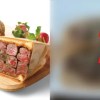 Is Japan’s massive Shizuoka steak sandwich really as delicious as it looks in promo photos?
Is Japan’s massive Shizuoka steak sandwich really as delicious as it looks in promo photos? Studio Ghibli now sells plush toys seen on Howl’s bed from Howl’s Moving Castle
Studio Ghibli now sells plush toys seen on Howl’s bed from Howl’s Moving Castle McDonald’s new Happy Meals offer up cute and practical Sanrio lifestyle goods
McDonald’s new Happy Meals offer up cute and practical Sanrio lifestyle goods Japanese ramen restaurants under pressure from new yen banknotes
Japanese ramen restaurants under pressure from new yen banknotes French Fries Bread in Tokyo’s Shibuya becomes a hit on social media
French Fries Bread in Tokyo’s Shibuya becomes a hit on social media Studio Ghibli releases new action figures featuring Nausicaä of the Valley of the Wind characters
Studio Ghibli releases new action figures featuring Nausicaä of the Valley of the Wind characters New private rooms on Tokaido Shinkansen change the way we travel from Tokyo to Kyoto
New private rooms on Tokaido Shinkansen change the way we travel from Tokyo to Kyoto Tokyo Tsukiji fish market site to be redeveloped with 50,000-seat stadium, hotel, shopping center
Tokyo Tsukiji fish market site to be redeveloped with 50,000-seat stadium, hotel, shopping center Beautiful Ghibli sealing wax kits let you create accessories and elegant letter decorations【Pics】
Beautiful Ghibli sealing wax kits let you create accessories and elegant letter decorations【Pics】 Studio Ghibli releases Kiki’s Delivery Service chocolate cake pouches in Japan
Studio Ghibli releases Kiki’s Delivery Service chocolate cake pouches in Japan New definition of “Japanese whiskey” goes into effect to prevent fakes from fooling overseas buyers
New definition of “Japanese whiskey” goes into effect to prevent fakes from fooling overseas buyers Our Japanese reporter visits Costco in the U.S., finds super American and very Japanese things
Our Japanese reporter visits Costco in the U.S., finds super American and very Japanese things All-you-can-drink Starbucks and amazing views part of Tokyo’s new 170 meter-high sky lounge
All-you-can-drink Starbucks and amazing views part of Tokyo’s new 170 meter-high sky lounge More foreign tourists than ever before in history visited Japan last month
More foreign tourists than ever before in history visited Japan last month New Pokémon cakes let you eat your way through Pikachu and all the Eevee evolutions
New Pokémon cakes let you eat your way through Pikachu and all the Eevee evolutions Disney princesses get official manga makeovers for Manga Princess Cafe opening in Tokyo
Disney princesses get official manga makeovers for Manga Princess Cafe opening in Tokyo Sales of Japan’s most convenient train ticket/shopping payment cards suspended indefinitely
Sales of Japan’s most convenient train ticket/shopping payment cards suspended indefinitely Sold-out Studio Ghibli desktop humidifiers are back so Totoro can help you through the dry season
Sold-out Studio Ghibli desktop humidifiers are back so Totoro can help you through the dry season Japanese government to make first change to romanization spelling rules since the 1950s
Japanese government to make first change to romanization spelling rules since the 1950s Ghibli founders Toshio Suzuki and Hayao Miyazaki contribute to Japanese whisky Totoro label design
Ghibli founders Toshio Suzuki and Hayao Miyazaki contribute to Japanese whisky Totoro label design Doraemon found buried at sea as scene from 1993 anime becomes real life【Photos】
Doraemon found buried at sea as scene from 1993 anime becomes real life【Photos】 Tokyo’s most famous Starbucks is closed
Tokyo’s most famous Starbucks is closed One Piece characters’ nationalities revealed, but fans have mixed opinions
One Piece characters’ nationalities revealed, but fans have mixed opinions We asked a Uniqlo employee what four things we should buy and their suggestions didn’t disappoint
We asked a Uniqlo employee what four things we should buy and their suggestions didn’t disappoint Princesses, fruits, and blacksmiths: Study reveals the 30 most unusual family names in Japan
Princesses, fruits, and blacksmiths: Study reveals the 30 most unusual family names in Japan 2,500 yen for Tokyo ramen? High-end noodles in the high-rent Ginza district are totally worth it
2,500 yen for Tokyo ramen? High-end noodles in the high-rent Ginza district are totally worth it Michelin-listed ramen restaurant will turn you into a tiger with a single bite
Michelin-listed ramen restaurant will turn you into a tiger with a single bite Mr. Sato gorges on Michelin-quality dim sum for his birthday, eats like a king for cheap
Mr. Sato gorges on Michelin-quality dim sum for his birthday, eats like a king for cheap Is ramen without the “men” a Tokyo dining paradox worth experiencing?【Taste test】
Is ramen without the “men” a Tokyo dining paradox worth experiencing?【Taste test】 “The devil made me do it!” Mr Sato eats cheese bread ramen in Tokyo
“The devil made me do it!” Mr Sato eats cheese bread ramen in Tokyo Tokyo Ramen Show seeks to find the country’s best regional noodles
Tokyo Ramen Show seeks to find the country’s best regional noodles We try french fries and chocolate sauce at Lotteria Japan
We try french fries and chocolate sauce at Lotteria Japan Choux pastry mania: Mr. Sato tries Beard Papa’s new Japanese-style cream puffs 【Taste Test】
Choux pastry mania: Mr. Sato tries Beard Papa’s new Japanese-style cream puffs 【Taste Test】 We eat a luxurious Japanese-style buffet breakfast in a restaurant full of wood-carved bears
We eat a luxurious Japanese-style buffet breakfast in a restaurant full of wood-carved bears We visit Shibuya Station’s limited-time unmanned ramen eatery for a dose of the future! 【Photos】
We visit Shibuya Station’s limited-time unmanned ramen eatery for a dose of the future! 【Photos】 Can a plant-based restaurant serving Buddhist meals turn meat-loving Mr. Sato into a vegetarian?
Can a plant-based restaurant serving Buddhist meals turn meat-loving Mr. Sato into a vegetarian? Only one Ringer Hut noodle shop in Japan sells koppepan sandwiches, and we try them out
Only one Ringer Hut noodle shop in Japan sells koppepan sandwiches, and we try them out Truck drivers love this Saitama Ramen Shop, but will it win our hearts?【Taste test】
Truck drivers love this Saitama Ramen Shop, but will it win our hearts?【Taste test】 Mr. Sato stuffs himself at an all-you-can-eat bakery event and ascends to carb heaven【Pics】
Mr. Sato stuffs himself at an all-you-can-eat bakery event and ascends to carb heaven【Pics】 Behold the fluffiest rice omelet in Tokyo…possibly the world!
Behold the fluffiest rice omelet in Tokyo…possibly the world!
Leave a Reply